4th of July
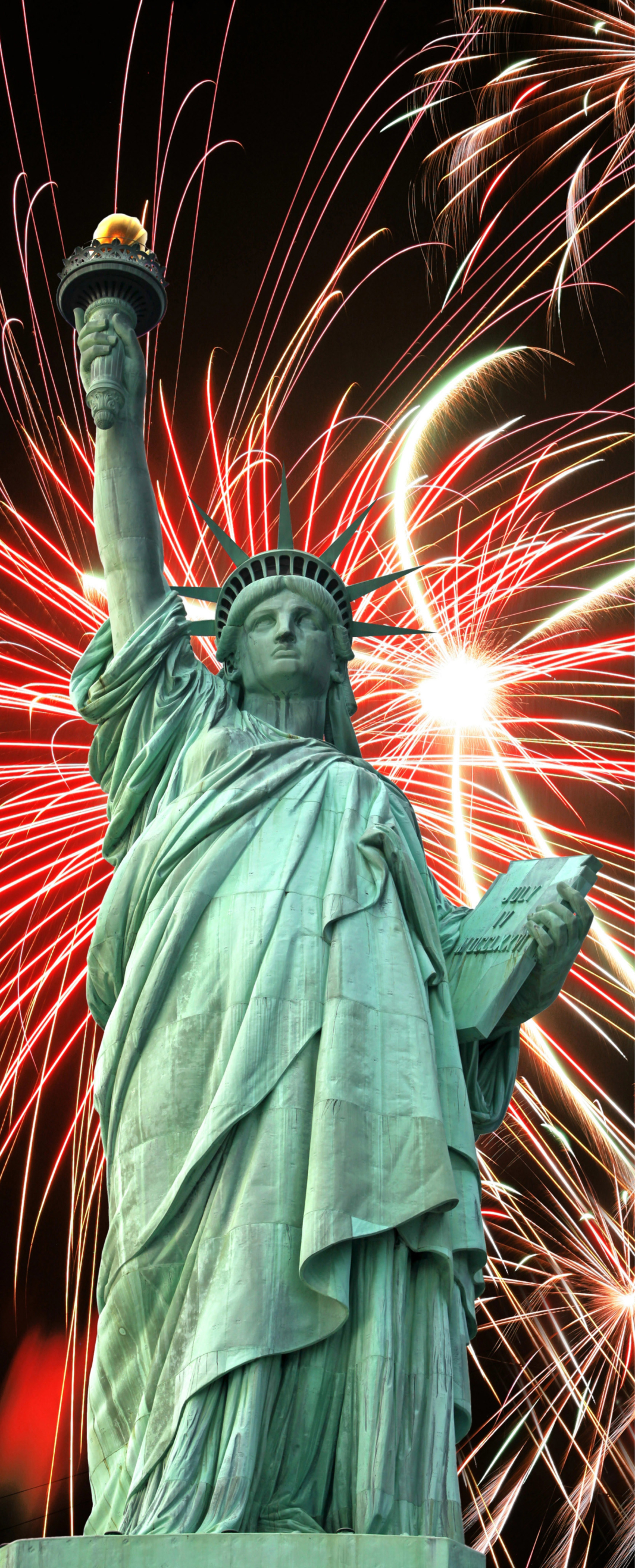
This day reminds us of the
sacrifices and courage all men and women took
to free our country and
to pay our respect to those who made it a free nation
for generations to come.
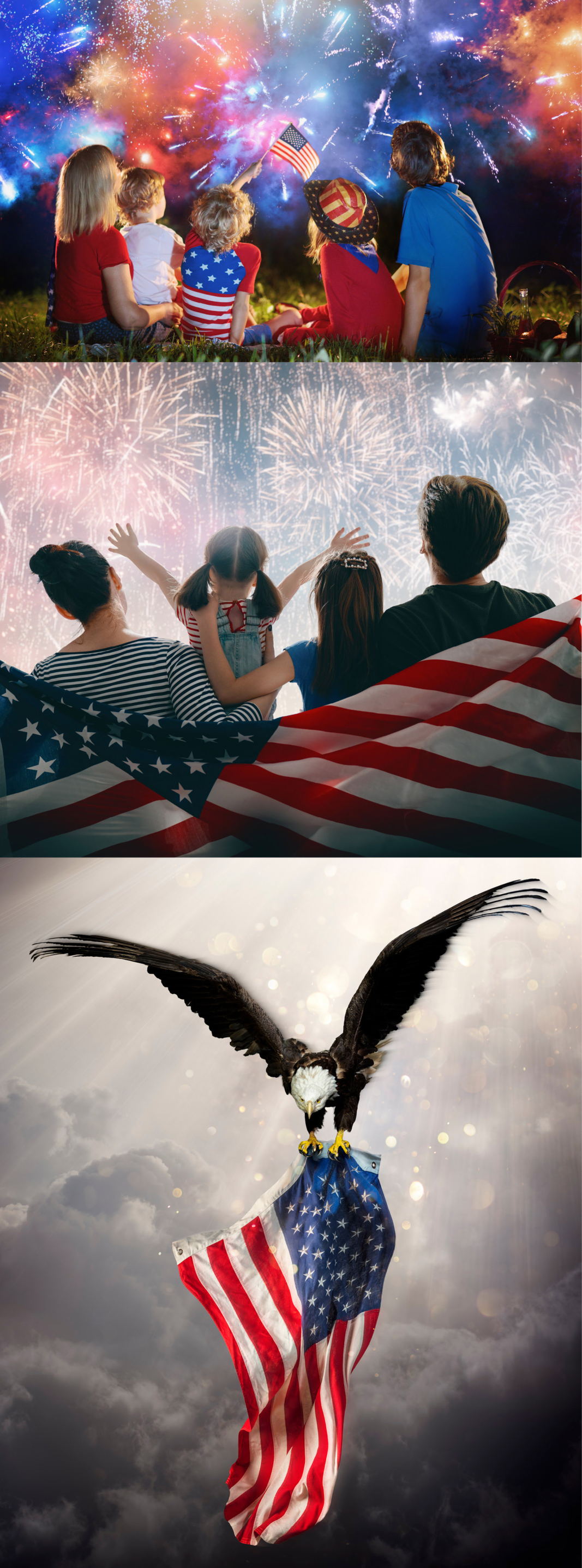
God Bless America.

This day reminds us of the
sacrifices and courage all men and women took
to free our country and
to pay our respect to those who made it a free nation
for generations to come.


Happy Birthday, America!
Bold stripes, bright stars, brave hearts.
Let freedom ring!
Enjoy the day with family and friends.

Let’s celebrate
together the incredible
freedoms we have
here in the USA.
Enjoy your 4th of July break
with family and friends.
• • • • • • From • • • • • •
•
•
•
All of Us at
Kowalski
Heat Treating
.
.
.
.
.
.
.
.
.
.
.
.

Enjoy this Independence Day Weekend!
Stay safe and remember…Don’t Burn the Burgers!!!!
God Bless this amazing country we live in!
.
.
.
.
.
.
::::::::::::::::::::::::::::::::::::::::::::::::::::::::::::::::::::::::::::::::::::::::::
DO YOU LIKE CONTESTS?
Me, too.
As you may know the Kowalski Heat Treating logo finds its way
into the visuals of my Friday posts.
I. Love. My. Logo.
One week there could be three logos.
The next week there could be 15 logos.
And sometimes the logo is very small or just a partial logo showing.
But there are always logos in some of the pictures.
So, I challenge you, my beloved readers, to count them and send me a
quick email with the total number of logos in the Friday post.
On the following Tuesday I’ll pick a winner from the correct answers
and send that lucky person some great KHT swag.
So, start counting and good luck!
Oh, and the logos at the very top header don’t count.
Got it? Good. :-))))
Have fun!!
::::::::::::::::::::::::::::::::::::::::::::::::::::::::::::::::::::::::::::::::::::::::::
.
.
.

I love doing these Friday afternoon emails for you all. They’re fun to do. I find them really interesting. And they give a whole lot of people much needed relief from the week’s stresses. This week’s email is no different. While you’re enjoying the July 4th weekend with friends, family and a hot dog or three, think about all of the other things that have happened on the Fourth of July. And take a listen to this rendition of “Battle Hymn of the Republic”!!! Be safe!
For most of us, July 4th is synonymous with Independence Day – The day this glorious country was officially was born. For me of course, this means yummy cookouts all day long and an indulgence on all my favorites – potato salad, fruit salad, Jackie’s amazing bean salad, grilled chicken, cheeseburgers, watermelon, chips, my favorite beverages – you get the idea. However, the adoption of the Declaration of Independence wasn’t the only important historical event to take place on this date. I did some digging and found cool trivia I thought you’d enjoy. On behalf of all my incredible PIA (Pain in the @%$) Jobs! gang at KHT, I hope you have a wonderful weekend with family and friends. Enjoy the info, and be sure to share over the grill. Special thanks to bestlifeonline.com, Wikipedia, You Tube and mentioned publications.
1802: The U.S. Military Academy at West Point officially opens – First announced by newly-minted president Thomas Jefferson a year earlier, the United States Military Academy (USMA) in West Point, New York, officially opened on July 4, 1802. In its early days, there was no strict curriculum or length of study, and the students ranged in age from 10 to 37 years old.
1803: Thomas Jefferson announces the Louisiana Purchase – For $15 million, the United States acquired approximately 827,000 square miles of land to the west of the Mississippi River. The “purchase” treaty was actually signed on April 30, 1803, but it wasn’t announced to the American people until more than a month later on July 4th.
1817: Construction begins on the Erie Canal – On July 4, 1817, workers broke ground on the Erie Canal in Rome, New York, led by chief engineer James Geddes. The waterway, which would extend 363 miles from the Great Lakes to the Hudson River by the time it was completed in 1825, would go on to transform the nation’s economy. According to the History Channel, by 1853, it carried 62 percent of all U.S. trade,
1826, 1831: Thomas Jefferson, John Adams, and James Monroe pass – Thomas Jefferson, John Adams, and James Monroe—the 2nd, 3rd, and 5th presidents of the United States, respectively—all died on the Fourth of July. In fact, Jefferson and Adams, who were legendarily political adversaries, both died on the same day: July 4, 1826.
1826: “Oh! Susanna” composer Stephen Foster is born in Lawrenceville, Pennsylvania – Later nicknamed “the father of American music,” Stephen Foster was one of the great composers of parlor and minstrel music. Foster wrote hundreds of songs, but “Oh! Susanna” and “Beautiful Dreamer” are among his best known.
1828: Construction begins on the first U.S. passenger railroad – The first fare-paying, passenger railway service in the world was the Swansea and Mumbles Railway in Swansea, Wales in 1807. The U.S. was just a couple of decades behind, and on July 4, 1828, workers broke ground on the Baltimore & Ohio Railroad (also called the B&O) at Baltimore Harbor in Maryland. Charles Carroll, the last surviving signer of the Declaration of Independence, laid the first stone at the site, according to America’s Library. The first section opened in 1830; it charged 9 cents for a one-way, 1.5-mile journey.
1831: “My Country, ‘Tis of Thee” is performed for the first time – Theology student Samuel Francis Smith wrote the lyrics to “America” (as the song was first named) in 1831 at the request of his friend, church-music composer Lowell Mason, according to the Gilder Lehrman Institute of American History. Impressively, the lyrics took Smith just 30 minutes to write, and were put to the melody of the national anthem in the United Kingdom, “God Save the Queen.” The song was first performed by a children’s choir at an Independence Day celebration that year at Park Street Church in Boston, Massachusetts.
1845: Henry David Thoreau moves into a small cabin that sparks his career – On July 4, 1845, Henry David Thoreau moved into a small cabin near Walden Pond in Concord, Massachusetts, according to Smithsonian. It was here that Thoreau wrote his first published works. Walden, one of the more famous pieces, was a documentation of his newfound simplistic lifestyle, and later played a key role in the environmental movement.
1855: Walt Whitman publishes the first edition of his poetry collection Leaves of Grass – Throughout his career, American poet Walt Whitman released various iterations of his famed poetry collection Leaves of Grass, but the first edition was published out of a small Brooklyn print shop on July 4, 1855. That initial collection included just 12 poems, whereas the final edition from 1892 included more than 300.
1862: The idea for Alice in Wonderland is conceived – On July 4, 1862, an obscure mathematics lecturer named Charles Lutwidge Dodgson set out on a rowboat excursion on the River Isis to the town of Godstow in Oxfordshire, United Kingdom. Dodgson, who went by the pen name Lewis Carroll, was joined by the three young daughters of Dean Henry Liddell. The girls begged for him to tell them a story as they floated down the river. Dodgson obliged, spinning the youngest, Alice Liddell, into the story. Thus, Alice in Wonderland was born. The book was published on November 26, 1865.
1870: Independence Day is celebrated as a federal holiday – For decades, American citizens had celebrated their independence on July 4th. However, it wasn’t until June 28, 1870, that the U.S. government made Independence Day a federal holiday. That made that year’s Fourth of July the first one that was celebrated as a federal holiday.
1883: Cartoonist Rube Goldberg is born – Reuben Garrett Lucius Goldberg was the first president and one of the founders of the National Cartoonists Society. He is best known for his eccentric cartoons of unnecessarily complicated machines meant to complete simple tasks—for example, a 40-step series of levers and pulleys that ultimately lead to something as simple as, say, turning on the faucet. These are now known as Rube Goldberg machines. Here’s an insane backyard machine (can’t stop watching it)
1884: The Statue of Liberty is presented to the United States in Paris – The significance of the Fourth of July to the statue goes back even further. It was on July 4, 1884, that the Statue of Liberty was presented by the Franco-American Union to the U.S. ambassador to France, Levi Morton, according to the National Constitution Center. Lady Liberty was then taken apart and shipped to the U.S. aboard the French Navy ship, the Isère. Since its arrival in New York Harbor, the Statue of Liberty has stood as a welcoming symbol for immigrants who come to America seeking a new life.
1892: July 4th happens twice – The year 1892 was a leap year, and so it had 366 days instead of the typical 365. However, Western Samoa made a change to its time zone that year, thus shifting where the country fell with regard to the International Date Line. As a result, in 1892, Western Samoa had two July 4ths back-to-back, for a total of 367 calendar days that year.
1927: The Lockheed Vega takes its maiden voyage – In 1927, the Lockheed Corporation of California built the Lockheed Vega, a six-passenger monoplane designed for long distances. Its first flight on Independence Day of that year began an important chapter in air travel. It was in this type of aircraft that Amelia Earhart made her famous flight across the Atlantic, and that Wiley Post proved the existence of the jet stream.
1934: Leó Szilárd patents the nuclear chain reaction – According to a passage in Richard Rhodes’ landmark The Making of the Atomic Bomb, Leó Szilárd, an influential nuclear age physicist, first developed the idea of nuclear chain reaction in 1933. Then, in 1934, inspired by research conducted by Enrico Fermi—yes, the very same one behind the Fermi Paradox—Szilárd took things a step further and patented the idea for a nuclear reactor on July 4th. (Fermi and Szilárd famously worked together on the Manhattan Project, putting this exact science into action.)
1939: Lou Gehrig announces his retirement – Lou Gehrig, or “the Iron Horse,” is one of the most exalted Baseball Hall of Famers of all time. Gehrig played for 17 seasons and was the first player to have his uniform number (No. 4) retired by a team, the New York Yankees—an honor well-deserved, given his six World Series Championships. On July 4, 1939, shortly after being diagnosed with amyotrophic lateral sclerosis (which is more colloquially called Lou Gehrig’s Disease today), Gehrig announced his retirement to a sold-out crowd at Yankee Stadium, famously calling himself, “the luckiest man on the face of the earth.”
1960: The American flag receives its 50th star – Though Hawaii was officially named a state in August of the previous year, the 50th star did not appear on the American flag until it was ceremoniously added on July 4th, 1960.
1966: The Freedom of Information Act is signed into law – The Freedom of Information Act (FOIA) was signed by President Lyndon B. Johnson on July 4, 1966, delighting journalists, researchers, and statisticians alike. FOIA mandates the disclosure of certain information held by the United States government, and today allows the general public to request crime data, trial and court history transcripts, investigative reports, and more.
1995: Bob Ross passes – Bob Ross, best known for his fluffy clouds, happy trees, and poofy hair, had his final episode of The Joy of Painting air on May 17, 1994. A little more than a year later, he died of lymphoma on July 4, 1995. Remember, you cannot have “dark without light”.
1996: Hotmail goes live – One of the first electronic mail providers, Hotmail, launched the revolutionary idea of accessing your messages from anywhere in the world. The e-mail service, whose name stems from the letters HTML, was sold to Microsoft in December 1997 for a reported $400 million. The company was famous for offering 2MB of free storage. Today, Gmail offers 15-20GB.
1997: The Pathfinder lands on Mars – NASA’s Mars Pathfinder was the first rover to go beyond the moon. It fittingly landed on Mars and began its mission on Independence Day of 1997. The 23-pound rover included scientific instruments meant to analyze the big red planet’s atmosphere, climate, and geology, according to NASA.
2012: The Higgs boson discovery is announced – The existence of the particle known as the Higgs boson was theorized in the ’60s, but on July 4, 2012, the discovery of a new particle with a mass between 125 and 127 GeV/c2 was announced. This particle is of critical importance to the field of particle physics, and can conceivably help scientists determine the fundamental properties of how mass works, how matter decays, and how the sun creates such limitless caches of energy, according to Scientific American.
2019: US publication Mad Magazine announces it will stop publishing new material after 67 years – An American humor magazine founded in 1952 by editor Harvey Kurtzman and publisher William Gaines, launched as a comic book before it became a magazine. It was widely imitated and influential, affecting satirical media, as well as the cultural landscape of the 20th century, with editor Al Feldstein increasing readership to more than two million during its 1974 circulation peak. Can you remember Spy vs. Spy and folding the back cover?
God Bless America!
And check out this video:
::::::::::::::::::::::::::::::::::::::::::::::::::::::::::::::::::::::::::::::::::::::::::
DO YOU LIKE CONTESTS?
Me, too.
As you may know the Kowalski Heat Treating logo finds its way
into the visuals of my Friday posts.
I. Love. My. Logo.
One week there could be three logos.
The next week there could be 15 logos.
And sometimes the logo is very small or just a partial logo showing.
But there are always logos in some of the pictures.
So, I challenge you, my beloved readers, to count them and send me
a quick email with the total number of logos in the Friday post.
On the following Tuesday I’ll pick a winner from the correct answers
and send that lucky person some great KHT swag.
So, start counting and good luck!
Oh, and the logos at the very top header don’t count.
Got it? Good. :-))))
Have fun!!
::::::::::::::::::::::::::::::::::::::::::::::::::::::::::::::::::::::::::::::::::::::::::

For all of the challenges we as a country face, The United States of America is still the Greatest country on Earth and I would not want to live anywhere else!
God Bless America!
–S.

Next week we’ll all be celebrating our nation’s annual freedom day – July 4th. A time for family, friends, fireworks and fun. For me, its tough to realize we’re already at this early summer milestone – (I still have not put away the snow shovels…. Just never know in Clevelburg). Of course, my FAVORITE part of the Fourth is the FOOD! I have so many favorites, and I work really hard to get them all in – dogs, burgers, grilled chicken, homemade potato salad, pasta salad, watermelon, deviled eggs – I can go on. So, with a bunch of days until the fourth, I decided to put together “Steve’s Fun Fourth of July Menu” you can choose from, and still hae time to run out and get the ingredients. Now, to be honest, if I listed all my favorites, you’d be reading a LONG time – enjoy the recipes, and more importantly, enjoy the 4th. Tons of thanks to countryliving.com for these killer recipes – log on to get the recipe specific slides and ingredient details here: https://www.countryliving.com/food-drinks/g3380/4th-of-july-recipes/?slide=1 and some beer pairing tips from our friends at www.tasteessence.com.

Fresh Corn Cobettes With Basil Butter
With a zesty cayenne pepper seasoning, these little cobs of fresh corn pack a flavorful punch. Try grilling them for awesome flavor.

Chive Potato Salad
You can never go wrong with potato salad at any cookout but expect this mayo-free version to run out faster than you can flip more hamburgers on the grill.

Watermelon, Tomato, and Feta Salad
Make this easy summer salad your go-to on the 4th of July, featuring a mouthwatering blend of sweet and savory.

Bourbon BBQ Glazed Pork Chops
The secret to this mouthwatering delight lies in the homemade bourbon-infused barbecue sauce. I like mine nice and crispy.

Grilled Hotdogs with Fixin’s
Take your cookout to the next level by topping the summer staple with one of these unexpected ideas. I love hot sauce, stadium mustard, and crisp dill pickle.

Charred Corn Salad
A sprinkling of red onion and a red chili give this smoky corn side some serious bite. It goes good with just about anything, especially chilled iced tea.

Mini Stars Berry Pies
Top these tiny desserts—filled with raspberries, blueberries, and strawberries—with a large scoop of vanilla ice cream. I can eat a whole bunch of these rascals.

Bacon Sriracha Potato Salad
Spice up your classic potato salad recipe with crowd favorites, like bacon and sriracha chili sauce. I should put “not fair” after this one – impossible to eat a little bit!

BBQ Chicken
What makes this barbecue chicken so delicious is the Italian seasoning and basil that gives it an extra punch of flavor. Load up on these drumsticks.

Sweet Heat Cheerwine Baby Back Ribs
Smothered on grilled baby back ribs, this Cheerwine glaze is finger-lickin’ good. Better stock up on the napkins – and crank up the HEAT to match your tastebuds.

Aloha Barbecue Sliders
Treat your guests to a sweet and salty treat with mini beef burgers made with pieces of pineapple, Swiss cheese and bacon. As in – “slide a few of these on to my plate please”

Grilled Stuffed Mini Bell Peppers
Stuffed with cream cheese, sour cream, cilantro and lime, these are melt-in-your-mouth delicious. Hard for these to make it from the grill to the kitchen…somehow a few disappear!

Chickpea Baked Beans with Barbecue Bacon Hummus
Chickpeas and black beans are tasty on their own. Pair them with barbecue bacon hummus, and you’ve got a dish you’ll crave all year long. Love this twist on baked bean favorite.

Apple Cranberry and Almond Coleslaw
This summer slaw offers the perfect crunch to top off all of your barbecue favorites. Sweet, tasty, and great with just about anything.

BONUS! Here is a nice beer pairing recipe guide https://tastessence.com/beers-that-go-well-with-bbq-grilled-foodyou can use as well. If you find something that work (be sure to experiment but don’t over do it), shoot me an email at skowalski@khtheat.com.
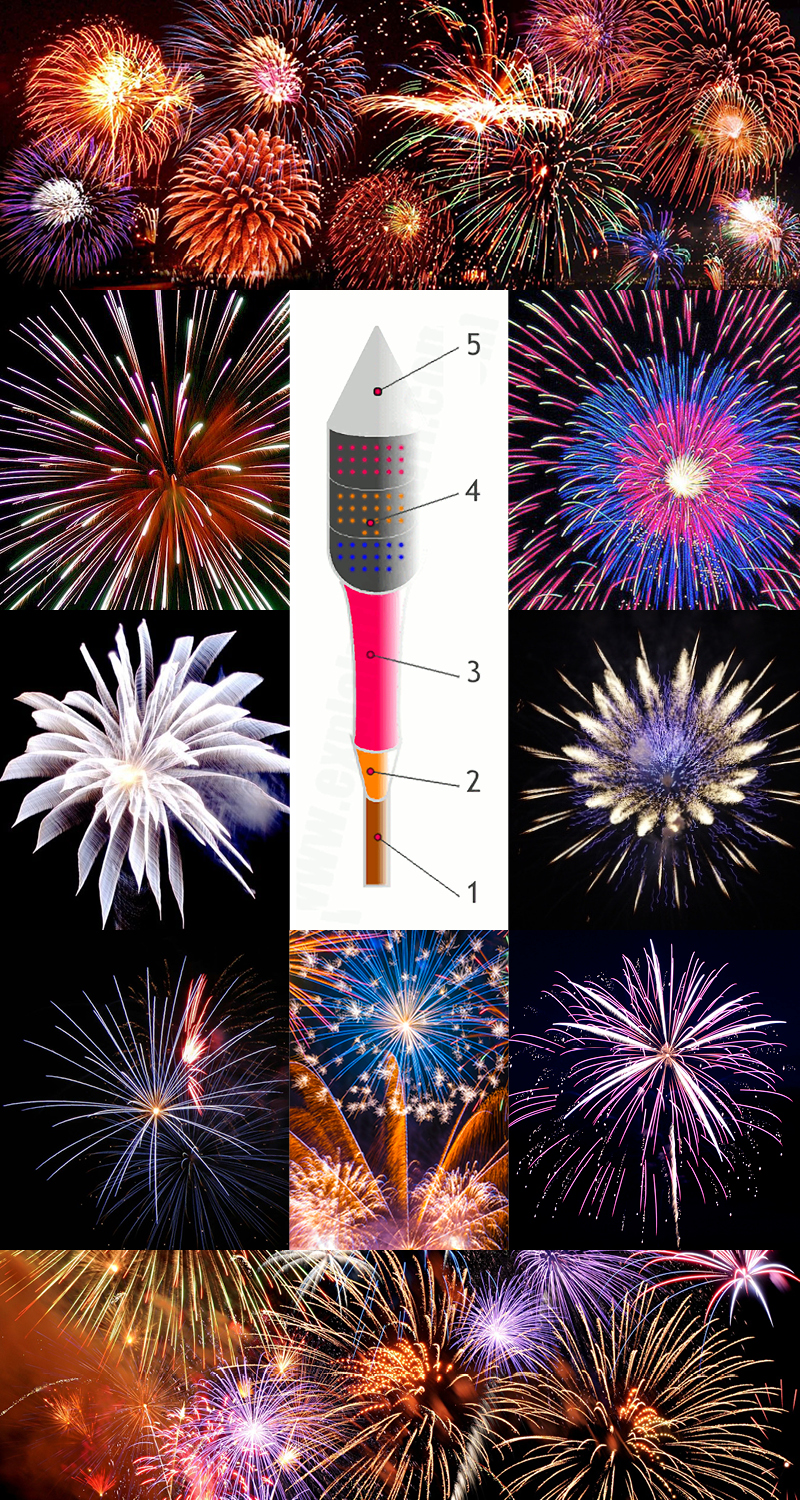
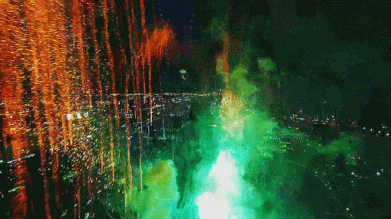
(middle image) The Anatomy of a Rocket: see explanation below. (all other still images) Fireworks are soooo great!! (bottom image via giphy.com) A short animated gif from drone footage. The full video can be seen HERE.
The Fourth of July weekend for me is one of the highlights of the summer. Not only do I get to see family and friends, and eat tons of my favorite foods (dogs, burgers, salads, watermelon, chips, cupcakes, ribs, grilled chicken, potatoes, beans, corn on the cob – I could go on…), but I get to watch awesome fireworks displays. When we were kids, Mom and Dad used to pack us all up in the car (we had 18 in the family remember) and drive over to Clague Park. I have such great memories of laying on a blanket and watching the light and sound shows.
So, here are two treats for you – some fireworks trivia and a list of some of the best fireworks shows in greater Cleveland. Enjoy, and special thanks to explainthatstuff.com and fireworksinohio.com.
The Anatomy of a Rocket
Fireworks can be quite complex and different types (rockets, Catherine wheels, lady fingers and so on) work in different ways. Simply speaking, though, aerial fireworks (ones designed to fire up into the sky) have five main parts.
Greater Cleveland Fireworks Shows
July 1 – Mayfield Fourth of July
July 1&2 – Brecksville Home Days
July 2 – Warrensville Heights Fireworks & North Olmstead Boom
July 3 – Independence 4th of July & Bratenahl Fourth of July
July 4 – Lakewood, Bay Village, and Solon Independence Day, Berea, Strongsville, Westlake
July 6,7,8 – Broadview Heights Home Days on the Green
July 8 – Fairview Park Summerfest & Orrville Fire In the Sky
July 9 – Brook Park Home Days
Also, let’s be sure to honor our country again this 4th – our vets, our speech, and our way of life. Say a prayer for those who came before us and thank them for their commitment to freedom, leadership, friendship and the great US of A.
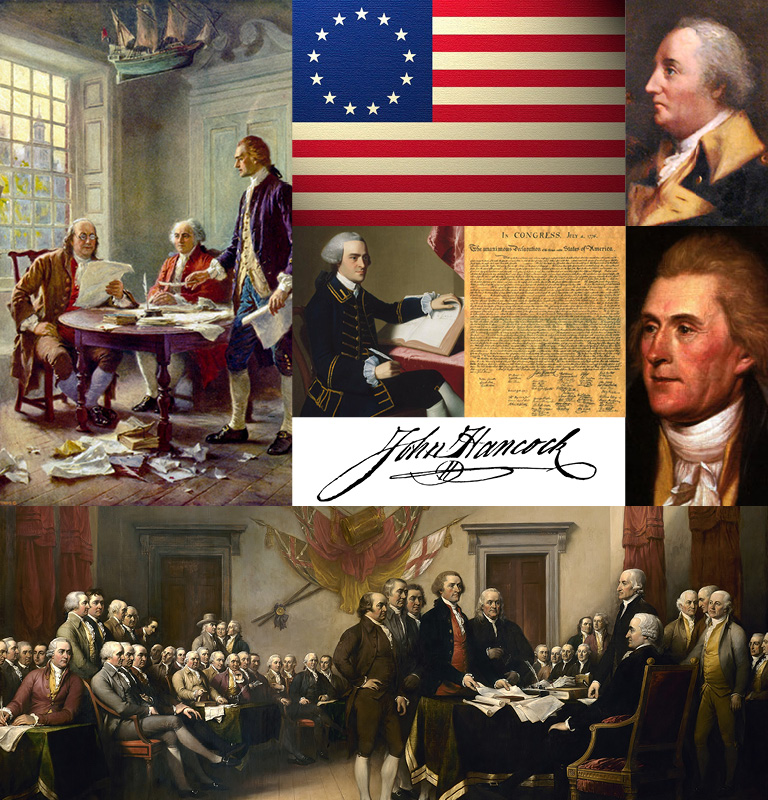
(top left) Franklin, Adams, and Jefferson working on the Declaration (Jean Leon Gerome Ferris, 1900); (top center) depiction of the original United States Flag with 13 stars; (top right) William Whipple, signer of the Declaration of Independence, freed his slave believing he could not both fight for liberty and own a slave. by Walter Gilman Page, 1897; (center left) John Hancock by John Singleton Copley (American, 1738–1815); (center right) The declaration of Independence. Download a readable high resolution image HERE; (center bottom) John Hancock’s John Hancock; (center far right) Thomas Jefferson, the principal author of the Declaration; (bottom) John Trumbull’s famous painting is often identified as a depiction of the signing of the Declaration, but it actually shows the drafting committee presenting its work to the Congress.
Our founders hammered out the words on the Declaration of Independence justifying our separation from the English Crown (King George III) and setting in motion a more just system of governing. I will comment no further except to say, be sure to never forget the second sentence: “We hold these truths to be self-evident, that all men are created equal, that they are endowed by their Creator with certain unalienable Rights, that among these are Life, Liberty and the pursuit of Happiness.”
Please, take the time to read on and remember that we are blessed to live in the most wonderful country on earth!
Happy Independence Day to you all!
IN CONGRESS, July 4, 1776.
The unanimous Declaration of the thirteen united States of America,
When in the Course of human events, it becomes necessary for one people to dissolve the political bands which have connected them with another, and to assume among the powers of the earth, the separate and equal station to which the Laws of Nature and of Nature’s God entitle them, a decent respect to the opinions of mankind requires that they should declare the causes which impel them to the separation.
We hold these truths to be self-evident, that all men are created equal, that they are endowed by their Creator with certain unalienable Rights, that among these are Life, Liberty and the pursuit of Happiness.–That to secure these rights, Governments are instituted among Men, deriving their just powers from the consent of the governed, –That whenever any Form of Government becomes destructive of these ends, it is the Right of the People to alter or to abolish it, and to institute new Government, laying its foundation on such principles and organizing its powers in such form, as to them shall seem most likely to effect their Safety and Happiness. Prudence, indeed, will dictate that Governments long established should not be changed for light and transient causes; and accordingly all experience hath shewn, that mankind are more disposed to suffer, while evils are sufferable, than to right themselves by abolishing the forms to which they are accustomed. But when a long train of abuses and usurpations, pursuing invariably the same Object evinces a design to reduce them under absolute Despotism, it is their right, it is their duty, to throw off such Government, and to provide new Guards for their future security.–Such has been the patient sufferance of these Colonies; and such is now the necessity which constrains them to alter their former Systems of Government. The history of the present King of Great Britain is a history of repeated injuries and usurpations, all having in direct object the establishment of an absolute Tyranny over these States. To prove this, let Facts be submitted to a candid world.
In every stage of these Oppressions We have Petitioned for Redress in the most humble terms: Our repeated Petitions have been answered only by repeated injury. A Prince whose character is thus marked by every act which may define a Tyrant, is unfit to be the ruler of a free people.
Nor have We been wanting in attentions to our Brittish brethren. We have warned them from time to time of attempts by their legislature to extend an unwarrantable jurisdiction over us. We have reminded them of the circumstances of our emigration and settlement here. We have appealed to their native justice and magnanimity, and we have conjured them by the ties of our common kindred to disavow these usurpations, which, would inevitably interrupt our connections and correspondence. They too have been deaf to the voice of justice and of consanguinity. We must, therefore, acquiesce in the necessity, which denounces our Separation, and hold them, as we hold the rest of mankind, Enemies in War, in Peace Friends.
We, therefore, the Representatives of the united States of America, in General Congress, Assembled, appealing to the Supreme Judge of the world for the rectitude of our intentions, do, in the Name, and by Authority of the good People of these Colonies, solemnly publish and declare, That these United Colonies are, and of Right ought to be Free and Independent States; that they are Absolved from all Allegiance to the British Crown, and that all political connection between them and the State of Great Britain, is and ought to be totally dissolved; and that as Free and Independent States, they have full Power to levy War, conclude Peace, contract Alliances, establish Commerce, and to do all other Acts and Things which Independent States may of right do. And for the support of this Declaration, with a firm reliance on the protection of divine Providence, we mutually pledge to each other our Lives, our Fortunes and our sacred Honor.
The 56 signatures on the Declaration appear in the positions indicated:
Column 1
Georgia:
Button Gwinnett
Lyman Hall
George Walton
Column 2
North Carolina:
William Hooper
Joseph Hewes
John Penn
South Carolina:
Edward Rutledge
Thomas Heyward, Jr.
Thomas Lynch, Jr.
Arthur Middleton
Column 3
Massachusetts:
John Hancock
Maryland:
Samuel Chase
William Paca
Thomas Stone
Charles Carroll of Carrollton
Virginia:
George Wythe
Richard Henry Lee
Thomas Jefferson
Benjamin Harrison
Thomas Nelson, Jr.
Francis Lightfoot Lee
Carter Braxton
Column 4
Pennsylvania:
Robert Morris
Benjamin Rush
Benjamin Franklin
John Morton
George Clymer
James Smith
George Taylor
James Wilson
George Ross
Delaware:
Caesar Rodney
George Read
Thomas McKean
Column 5
New York:
William Floyd
Philip Livingston
Francis Lewis
Lewis Morris
New Jersey:
Richard Stockton
John Witherspoon
Francis Hopkinson
John Hart
Abraham Clark
Column 6
New Hampshire:
Josiah Bartlett
William Whipple
Massachusetts:
Samuel Adams
John Adams
Robert Treat Paine
Elbridge Gerry
Rhode Island:
Stephen Hopkins
William Ellery
Connecticut:
Roger Sherman
Samuel Huntington
William Williams
Oliver Wolcott
New Hampshire:
Matthew Thornton
Tomorrow, as we all celebrate the 239th Independence Day of this great nation, we at Kowalski Heat Treating are also pleased to be celebrating our 40th anniversary by looking back to all the men and women of the KHT family who have helped make this anniversary year so special.
This holiday weekend, celebrate with your family – as John Adams wrote: “as the great anniversary Festival, to include “Pomp and Parade…Games, Sports, Guns, Bells, Bonfires and Illuminations from one End of this Continent to the other.”
